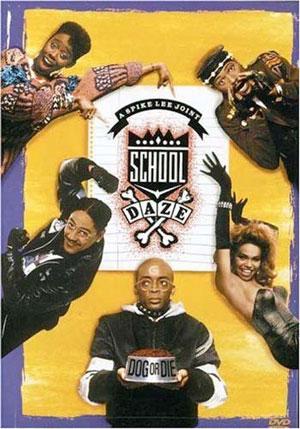
In 1988, Spike Lee released his second feature film, School Daze. The film focused on an in depth look at the cultural and social realities that were present in the realms of a historically black university. I can remember sitting in the back of the theater watching the story unfold, seeming all too young to truly appreciate the film’s message; but when two opposing groups of campus women battled out the difference between “good” and “bad” hair, I paid attention.
At an early age, the latter terms infused my environment, it made no difference which category I fit into, but I wondered what defined each. In my home, hair was nothing more than what we brushed up into braids or rolled in pink curlers for special occasions. However, as I matured, my social awareness shifted to the forefront, and I began noticing the cultural impact associated with “good hair.”
I realized that the distinction was something that mattered more to some than I could have imagined, and like the film depicted, a cultural tension was present in regards to what it meant to have, what was called, a certain “grade” of hair, and complexion also held great significance. Was it that the appearance of natural or curly hair was less desirable in comparison? What exactly did “good” mean? I shuttered to think that the fine texture and straight edges, similar to the features of Caucasian hair, were at the core of designating it as a crown of glory.
If African-Americans with a texture of hair described as smooth, fine, or straight is considered “good” then the opposing “bad” hair is associated with natural dos, afros, puffs and the beautiful curls that make us so unique. What remains most troubling is that the African-American community often utilizes this parallelism of terms. We seldom hear someone from the majority informing a person from a minority group that they have “good hair.” This raises the question: Why do we choose to categorize ourselves in such trivial classes, when much of the world makes a point of doing it for us?
As the human race, we often have to rely on the mirror image for uplifting. Incorporating standards of physical beauty that put down natural features of any ethnicity is harmful. As an adult, I watch School Daze through the eyes of an experienced, confident person. Spike Lee's message affirms that there is no such thing as good and bad hair: it is simply a good and bad perception of what we humans created. In choosing to embrace those characteristics that set us apart from one another, we are showing cultural pride, and inevitably, closing a gap that has been open for far too long.

Comments
I had the same reaction to
I had the same reaction to this movie, we have this unhealthy obsession with straight long hair. Plus I love how Spike Lee brings up the issues of light skinned women vs dark skinned. I found that even the most open minded of people have a preference of light skinned women because they supposedly are always more attractive, which is not true!
Comments to Good Hair Article
I agree with what this article was saying about hair types. What does it mean if someone has good hair or bad hair? It is simply people putting others in classes again on what they feel is right in society. It is so sad that we have people who judge other on their hairtypes. There are more important things in life to worry about than if someones hair looks good or not. I find myself commenting if someone has nice hair. I could never imagine myself judging another person because of their hair or not being friends with someone because of the type of hair they have. Hair is something you can't control, its something you are born with. This article made great points and was correct when it said suggests its confusion on why society puts people in classes on something so unimportant like hair.
Hair Restoration
Stitchless Follicular Extraction Technique (FoEx) and Body hair transplant can be planned for a suitable candidate. Planning an early hair transplant session, before your hair loss has reached an advanced stage has its advantages. Gradual hair loss is gradually replaced in stages. Your remaining natural hair provides good camouflage for the initial sessions. Your sessions can be well placed, even a few years apart. At any stage in your life you will never look as bald as you would have appeared without a hair transplant. Hair Restoration